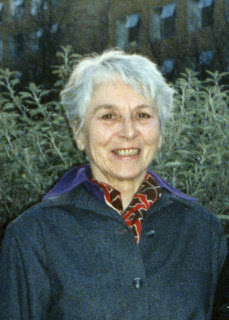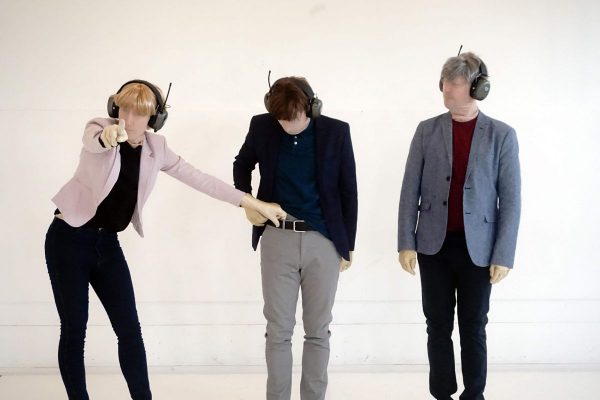The world premiere of MADDADDAM took place on Nov. 23 at the Four Seasons Centre for the Performing Arts in Toronto, continuing to run until Nov. 30.
“Adam named the living animals, MaddAddam names the dead ones. Do you want to play?” These are the words — ominous, attuned to both destruction and myths of origin — that initiate Extinctathon, a computer game in Margaret Atwood’s MaddAddam novels. For a National Ballet of Canada world premiere, choreographer Wayne McGregor adapts Atwood’s dystopian trilogy, where humanity is nearly annihilated by an engineered pandemic, in a visually impressive production that approaches its source material inventively though not wholly convincingly.

Act I of MADDADDAM (Castaway) introduces the post-apocalyptic world and its few survivors. With little backstory provided, characters and relationships would be challenging to contextualize without prior knowledge, and some production and design choices undermine the dramatic stakes. The Pigoons (pig-human hybrids) resemble giant, plucked turkeys and anarchic Painballers terrorize characters wearing furry, coloured, crop top vests. A giant dome acts as an eye-catching projection backdrop but to mixed effect, sometimes adding complementary visual texture while elsewhere using imagery to reinforce onstage action without deepening it. As you try and get your bearings, MADDADDAM gives us too much of what is already clear and not enough of what could better illuminate.

As you try and get your bearings, MADDADDAM gives us too much of what is already clear and not enough of what could better illuminate.
Schoenmakers
Amidst the disorder, intended and otherwise, there are early standouts. While impossible to fully explicate as in writing, the love triangle between Oryx (a top-notch Koto Ishihara) and childhood friends Crake and Jimmy is masterfully choreographed to convey a subtle tension, the type easy to sense but challenging to locate precisely. I also enjoyed the innocent, playful movement of the Crakers — docile hominids Crake engineered to replace homo sapiens — who are collectively intrigued by and venerate Jimmy (Siphesihle November). November expresses a remarkable presence. You get the sense he is perceiving, making sense of and responding to his situation in real time, a physical immediacy that is transporting and here achieves the sense of audience immersion McGregor aspires to.

Act II (Extinctathon) adds some needed context, jumping back in time to explore MADDADDAM’s characters and action leading to the calamity. (While Atwood uses extensive flashback in the novels, I wonder whether chronological presentation might have helped here.) The eco-religious sect, God’s Gardeners, dances with suitable clear-eyed zeal, while the militaristic CorpSeCorps offers the first real jolt of the night, dancing with conformity and precision, executing movements that are springy but sharp. Harrison James’ technical skill serves him well as the humanity-destroying Crake; there is a moment where he practices abrupt movements and port de bras positions, as though calculating something, which he then arranges into a chilly, exacting solo before implementing his plan.

Max Richter’s excellent score contributes significantly to the production, a blending of orchestral and electronic compositions that progress the action appropriately and elevate the dancing, ranging from menacing, churning electronic beats to more organic live music, including a repeated, forlorn motif. We Not I’s designs are evocative without being intrusive, including the stunning, minimalist cityscape hanging from the rafters in Act II.
The production elements and narrative coalesce best in Act III (Dawn), which looks to a future after Act I, one even beyond Atwood’s books. In a moving scene, resonant with the connection between artistry and mythmaking, the Crakers use objects of the dead, such as Jimmy’s hat, to create rudimentary puppets and tell their stories. Corps de ballet member Jason Ferro, as Descendant Blackbeard, is breathtaking in a solo, not simply dance-acting but inhabiting the act of communication through movement, with a clarity as if he were speaking. He is soon joined by other “descendants” and “ancestors” in a gorgeous, lyrical section where characters pair off in endless combinations. It feels like hope, abundance. Like the incredible, not-to-be-taken-for-granted gift of a second chance or new beginning.
Corps de ballet member Jason Ferro, as Descendant Blackbeard, is breathtaking in a solo, not simply dance-acting but inhabiting the act of communication through movement, with a clarity as if he were speaking.
Schoenmakers

While eager to avoid a directly literal retelling, MADDADDAM still adheres to the framework of Atwood’s stories, their language and narrative elements — and the production ultimately struggles to concisely distill their vast, detailed world. So we often get shortcut signifiers projected onto the stage: a pig in a cage; advertisements for a blue pill that resembles Viagra; wolves devouring a deer; a genome sequence; the word “love” spelled in meat-blood. These images gesture toward Atwood’s themes — misogyny, commodification, scientific hubris, climate havoc — without substituting the incisiveness and grim wit of her writing for a gripping, physical alternative. Atwood’s vision is damning and terrifying; as a whole, MADDADDAM may not achieve its own force equal to that vision, but it manages to rescue some beauty from the rubble.
Give a gift, get a gift! Send a loved one a gift subscription to The Dance Current this holiday season and you’ll received a FREE tote bag! Offer ends December 11.

Tagged: Ballet, Choreography, Dystopian, literature, Maddaddam, Margaret Atwood, National Ballet of Canada, Performance, Toronto, ON , Ontario , Toronto






